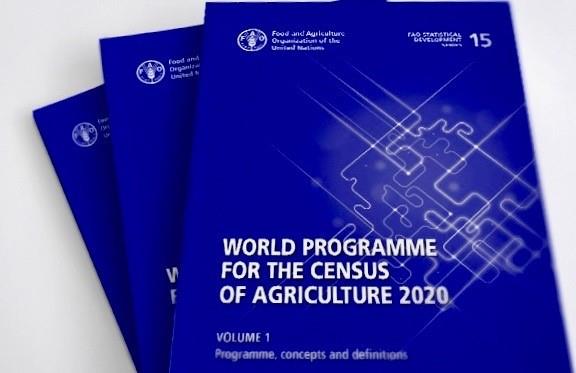FAO and World Census of Agriculture

On 26 November, Oleg Kobiakov, Director of the FAO Moscow Office, delivered a presentation titled “FAO World Programme for the Census of Agriculture 2020” (WCA 2020) at the roundtable discussion spearheaded by the Federal State Statistics Service (Rosstat) with a focus on “Agricultural record: data that is sought after.”
“First of all, I would like to convey congratulations on the successful completion of the Russian Census of Agriculture from the leadership of the FAO Statistical Service – Pietro Gennari, as well as George Kvinikadze, known to many of you personally as the author of the methodological recommendations for the implementation of the WCA 2020,” Oleg Kobiakov said in his introduction.
Further, Oleg Kobiakov elaborated on the methodological foundations and the course of the WCA 2020: “Census of Agriculture is a statistical operation for the collection, processing and dissemination of data on the structure of agriculture covering the whole or a significant part of the country,” noted the Head of the FAO Moscow Office. “Such work is carried out on a national, regional and international scale and is of particular importance in the context of the 2030 Agenda for Sustainable Development and the coordinate system of its Goals."
“FAO is the leading UN agency responsible for promoting and supporting agricultural censuses worldwide. This is done through the ten-year programmes of the WCA, starting with the 1950 programme. Every 10 years, FAO reviews the Programme based on country experiences, lessons learned and new data needs.
“The methodology of the current WCA 2020, covering censuses to be conducted by countries in the period 2016-2025, was released in two volumes: Volume 1 – “Programme, Concepts, and Definitions” was published in 2016, while Volume 2 “Operational guidelines” was published in 2019. Both publications are available in all six FAO languages, including Russian.
“The participation of FAO member countries in the WCA rounds has increased over the decades. It has grown from 53 countries and territories in the 1950 round (when the first WCA was launched) to 127 countries in the 2010 round.
“In early 2020, FAO conducted a mid-term review of the plans and progress of national censuses of agriculture in the WCA 2020 round. The findings show that an increasing number of countries are shifting their census methodologies from classical to modular approach and combining field enumeration with the use of administrative registers. Many countries have postponed most of their census operations due to lack of funds as well as in the result of the protracted impact of COVID-19.
The survey has been sent to 203 countries. However, replies for the WCA 2020 have been received only from 111 countries and territories. 26 percent of the 111 responding countries (i.e., 29 countries) have already conducted an agricultural census and 68 percent (i.e., 75 countries) are planning to do so or have an ongoing census of agriculture in the WCA 2020 round. Most of these countries are in Europe, Africa, and Asia.
“The survey took place before the impact of the COVID-19 pandemic. A subsequent review in late 2020 (Castano, 2020) found that nearly two-thirds of 130 countries and territories with ongoing census activities had been disrupted by the pandemic. The censuses in these countries were either delayed (32 percent of countries), postponed (26 percent) or suspended (5 percent).
“On 25-29 October 2021, FAO organized a virtual “Webinar on practical aspects of the WCA 2020”, in which Natalia Shashlova, Head of the Department of Agriculture and Environment Statistics of Rosstat, took part representing Russia. She made a very interesting presentation about the Russian Census of Agriculture, which caused a lively discussion.
As for the microcensus itself, I would highlight two points. Firstly, the idea of a microcensus conducted between two consecutive complete censuses is innovative. It is akin to structural surveys conducted by the EU countries but differs from them in that it contains a significant component of continuous registration.
Secondly, during the microcensus, Russia applied innovative methods for objective data control: satellite monitoring and the use of unmanned aerial vehicles. FAO awaits with interest the results of the compilation of this first Russian experience in conducting a microcensus, which may be useful to many member countries of the Organization.
I thank you for your attention and confirm my readiness to continue our constructive cooperation both on the census and on SDG statistics.”
